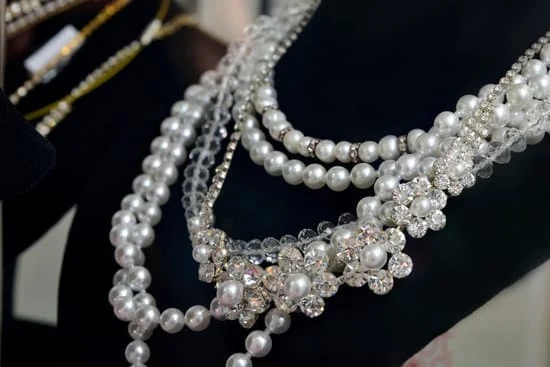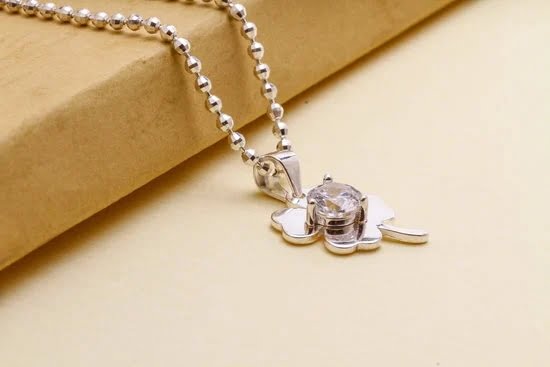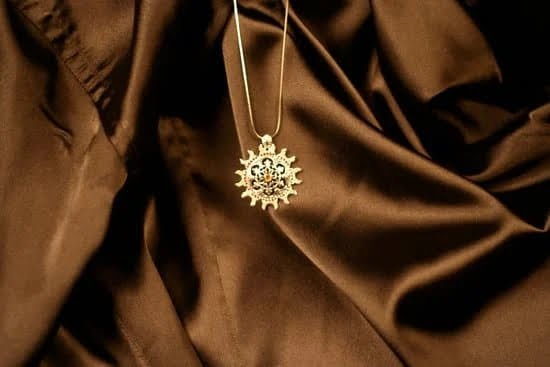Are you interested in learning how to melt gold jewelry? Melted down, that old, broken or unwanted jewelry can be turned into something new and beautiful. In this article, we will explore the process of melting gold jewelry, from understanding the basics and techniques to ensuring safety measures and preparing the necessary tools and equipment.
Gold melting is a fascinating process that requires careful attention to detail and proper technique to ensure successful results. Whether you’re looking to repurpose old jewelry into something new or refine raw gold materials, understanding the process of melting gold jewelry is essential for anyone working with precious metals.
Throughout this article, we will cover everything you need to know about melting gold jewelry, including the different methods and techniques, safety measures, tools and equipment needed, as well as a step-by-step guide to the actual melting process. Additionally, we’ll also discuss common mistakes to avoid when melting gold jewelry and post-melting procedures such as refining and shaping the melted gold.
So if you’re ready to explore the world of transforming gold jewelry through melting, keep reading to discover everything you need to know about this fascinating process.
The Basics of Gold Melting
Melting gold jewelry is a process that requires careful consideration and the right techniques to ensure successful results. There are several methods and techniques for melting gold jewelry, each with its own set of advantages and considerations.
One of the most common methods is using a torch to heat the gold to its melting point, while another method involves using a furnace for larger quantities of gold. Understanding these different methods and techniques is essential for anyone looking to melt gold jewelry.
One popular technique for melting gold jewelry is using a torch, which involves applying direct heat to the gold until it reaches its melting point. This method allows for precise control over the temperature and can be used for small quantities of gold.
On the other hand, using a furnace can be more suitable for larger quantities of gold and offers more uniform heating. Both methods have their own set of safety precautions and considerations, so it’s important to choose the one that best suits your needs.
It’s essential to note that regardless of the method chosen, proper safety measures must be in place when melting gold jewelry. This includes wearing protective gear such as gloves, goggles, and an apron to shield against any potential hazards.
Additionally, working in a well-ventilated area and having access to fire extinguishing equipment are crucial steps in ensuring safe gold melting practices. Understanding these basics of gold melting helps individuals decide which method will work best for them when considering how to melt gold jewelry.
Safety Measures
Melting gold jewelry can be a delicate process that requires careful attention to safety measures. When working with high temperatures and precious metals, it is crucial to take the necessary precautions to ensure the well-being of yourself and those around you.
One of the most important safety measures when melting gold jewelry is to work in a well-ventilated area. This will help to disperse any fumes or gases that may be produced during the melting process, preventing them from accumulating and posing a health risk. Additionally, wearing protective eyewear and gloves is essential to safeguard against any potential splashes or spills of molten gold.
Another key safety tip is to have a fire extinguisher on hand at all times. While working with open flames or torches, there is always a risk of fire, so having a fire extinguisher nearby can provide peace of mind and serve as a quick response in case of emergency.
It is also important to be mindful of the materials being used for melting gold jewelry. For example, using heat-resistant crucibles and tongs designed specifically for handling molten metal can help prevent accidents and ensure a more controlled melting process. Taking these safety measures into consideration will help make the gold melting process safer and more efficient.
| Safety Measure | Importance |
|---|---|
| Work in a well-ventilated area | Prevents health risks from fumes |
| Wear protective eyewear and gloves | Safeguards against splashes or spills |
| Have a fire extinguisher on hand | Quick response in case of emergency |
| Use heat-resistant crucibles and tongs | Prevents accidents during melting process |
Tools and Equipment Needed for Melting Gold Jewelry
Crucible and Tongs
One of the most essential tools for melting gold jewelry is a crucible, which is a heat-resistant container used to melt metal. Crucibles are commonly made of materials such as graphite, silicon carbide, or clay. It is important to choose a crucible that can withstand the high temperatures required for melting gold. Additionally, tongs are necessary for handling the hot crucible during the melting process.
Propane Torch or Furnace
Another key piece of equipment for melting gold jewelry is a propane torch or furnace. A propane torch can be used for smaller scale projects and provides a portable and relatively inexpensive option for melting gold. On the other hand, a furnace is more suitable for larger quantities of gold and offers more precise temperature control.
Safety Gear
Safety should always be a top priority when working with molten metal. Therefore, it is crucial to have proper safety gear when melting gold jewelry. This includes heat-resistant gloves, goggles or a face shield to protect against splashes and fumes, as well as an apron to shield clothing from any potential splatters.
Other Essential Equipment
In addition to the above-mentioned tools, it’s important to have a stirring rod or graphite stick for mixing the molten gold, as well as borax powder or flux to help separate impurities from the gold during the melting process. A reliable source of ventilation is also necessary to ensure that any fumes produced during melting are properly ventilated out of the work area.
Preparing the Gold Jewelry for Melting
Before melting gold jewelry, it is essential to prepare the materials properly. This involves cleaning and separating the gold from any other materials that may be present in the piece of jewelry. This step is crucial to ensure a successful melting process and to obtain high-quality melted gold.
The first step in preparing gold jewelry for melting is to clean the pieces thoroughly. Any dirt, oil, or residue on the jewelry can result in impurities in the melted gold. To clean the jewelry, use a mild detergent or soap and warm water to gently scrub the surface of the pieces. It is important to ensure that all crevices and surfaces are thoroughly cleaned.
Once the gold jewelry is clean, it is essential to separate any gemstones, precious stones, or non-gold parts from the pieces. This can be done by carefully examining the jewelry and removing any stones or materials that are not gold. It is important to be cautious during this process to avoid damaging the valuable components of the jewelry.
After cleaning and separating the materials, it is advisable to weigh the gold pieces that will be melted. This will help determine their purity and value before proceeding with the melting process.
| Gold Jewelry Preparation | Steps |
|---|---|
| Cleaning | Use warm water and mild detergent to clean all surfaces of the jewelry |
| Separation | Carefully remove any gemstones or non-gold parts from the pieces |
| Weighing | Determine purity and value by weighing each piece of gold |
Step-by-Step Guide to Melting Gold Jewelry
Melting gold jewelry is a process that requires precision and careful attention to detail. Whether you are looking to repurpose old jewelry or create new designs, knowing how to melt gold jewelry can open up a world of possibilities for your creations. In this section, we will walk you through the step-by-step process of melting gold jewelry from heating the material to pouring the molten gold.
Preparing the Workspace
Before you begin melting your gold jewelry, it is essential to set up a designated workspace that is well-ventilated and free from any flammable materials. You will need a heat-resistant surface such as a graphite or ceramic crucible, as well as tools for handling hot metal such as tongs and gloves. Additionally, make sure to have a fire extinguisher on hand in case of emergencies.
Heating the Gold
Once your workspace is prepared, it’s time to start the melting process. Place your gold jewelry in the crucible and use a torch to apply heat gradually. It’s important to use the right amount of heat – too little may not melt the gold completely, while too much can cause it to evaporate or become contaminated. As the gold reaches its melting point (around 1945 degrees Fahrenheit), it will turn into a liquid state.
Pouring the Molten Gold
When the gold has fully melted, carefully pour it into your desired mold or container using caution to avoid splashing or spills. Be mindful of any impurities or foreign particles that may have accumulated on top of the molten metal and remove them before pouring. Allow the gold to cool and solidify before handling it further.
By following these steps, you can successfully melt your gold jewelry and use the resulting material for various purposes such as creating new pieces or selling it for profit.
Common Mistakes to Avoid When Melting Gold Jewelry
When it comes to melting gold jewelry, there are several common mistakes that people make during the process. Avoiding these mistakes is essential for achieving successful results and ensuring safety. Here are some of the most common mistakes to avoid when melting gold jewelry:
- Not wearing appropriate safety gear: One of the biggest mistakes people make when melting gold jewelry is not wearing the necessary safety gear. This includes heat-resistant gloves, protective eyewear, and an apron to protect against splattering metal.
- Using improper equipment: Another mistake to avoid is using the wrong tools and equipment for melting gold. It’s important to use a proper crucible, tongs, and a high-quality torch or furnace designed specifically for melting precious metals.
- Overheating the gold: Overheating the gold can result in it becoming brittle and losing its desirable characteristics. It’s crucial to carefully monitor the temperature during the melting process and avoid excessive heat.
Avoiding these common mistakes will help ensure a successful and safe experience when melting gold jewelry. By following proper procedures and using the right equipment, you can effectively melt your gold jewelry without encountering these common pitfalls.
Now that you know what mistakes to avoid, let’s explore the post-melting procedures for refining and shaping the melted gold.
Post-Melting Procedures
Once the gold jewelry has been successfully melted down, the next step is to refine and shape the melted gold into its desired form. This process involves further purification of the gold and transforming it into a usable and marketable product. Here are some essential post-melting procedures for refining and shaping the melted gold:
1. Refining the gold: After the initial melting process, the melted gold may still contain impurities such as dirt, oils, or other metals. To refine the gold, it can be subjected to processes such as cupellation, in which the impurities are oxidized and then removed through a process of heating and cooling. Another method is acid treatment, where nitric acid is used to dissolve non-gold elements, leaving behind purified gold.
2. Shaping the gold: Once the gold has been refined, it can be shaped into various forms depending on its intended use. This can include casting the gold into molds to create ingots or bars, or using it to create intricate jewelry designs through techniques such as soldering and metalworking.
3. Quality assessment: It is important to assess the quality of the refined and shaped gold through methods such as assaying, which determines its purity and composition. This step ensures that the final product meets industry standards and can be accurately valued.
Overall, by following these post-melting procedures for refining and shaping melted gold jewelry, individuals can transform their raw materials into valuable assets that can be sold or used for creating new pieces of jewelry.
Conclusion
In conclusion, melting gold jewelry can be a rewarding process, as it allows individuals to repurpose their old pieces and potentially make some profit from the melted gold. Understanding the various methods and techniques for melting gold, as well as implementing safety measures, is crucial in ensuring a successful and safe process. By following the step-by-step guide provided in this article, individuals can confidently melt their gold jewelry at home with the right tools and equipment.
After successfully melting the gold jewelry, it is important to consider what to do with the resulting melted gold. Whether you are interested in selling the refined gold or using it for a new custom jewelry piece, there are various options available.
It may be beneficial to research current market prices for gold and consider getting multiple quotes from reputable buyers if you are interested in selling the gold. On the other hand, if you want to use the melted gold for creating a new piece of jewelry, collaborating with a skilled jeweler can help bring your vision to life.
Ultimately, knowing how to melt gold jewelry opens up opportunities for individuals to explore their creativity or potentially earn money from unused pieces. By carefully considering post-melting procedures and researching options for using or selling the resulting melted gold, individuals can maximize the benefits of their melting endeavors. Whether it’s turning old sentimental pieces into something new or profiting from unwanted items, learning how to melt gold jewelry can be a valuable skill.
Frequently Asked Questions
Is It Worth Melting Gold Jewelry?
Melting down gold jewelry can be worth it if the value of the gold metal outweighs the sentimental or aesthetic value of the jewelry piece. It’s important to consider factors like purity, market price, and any potential loss in value from sentimental or antique pieces before making a decision.
How Do You Get Pure Gold Out of Jewelry?
To get pure gold out of jewelry, the most common method is to use a process called smelting. This involves heating the gold at very high temperatures to separate it from any impurities and other metals. After smelting, further refining processes such as cupellation or electrolysis can be used to achieve a higher level of purity.
How Do You Separate Gold From Other Metals in Jewelry?
Separating gold from other metals in jewelry can be done through various methods. One common technique is acid testing, where different acids are used to dissolve impurities and leave behind the gold.
Another method is using a magnet to separate any magnetic metals from non-magnetic gold. There are also chemical treatments and electrolysis that can help to separate gold from other metals present in the jewelry piece.

Welcome to my jewelry blog! My name is Sarah and I am the owner of this blog.
I love making jewelry and sharing my creations with others.
So whether you’re someone who loves wearing jewelry yourself or simply enjoys learning about it, be sure to check out my blog for insightful posts on everything related to this exciting topic!





